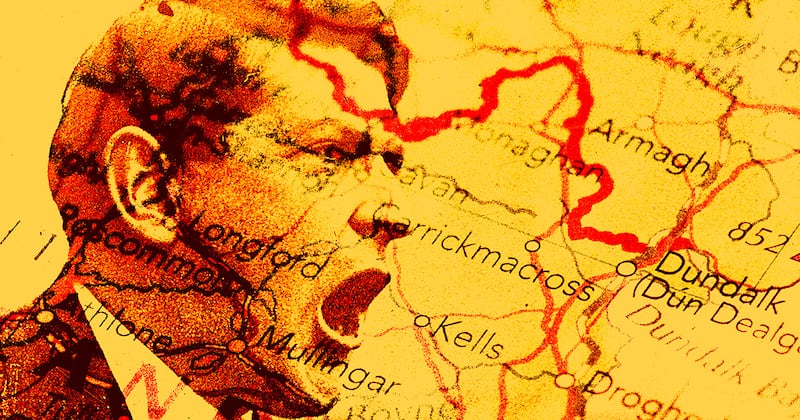ELLIE and ALICE LYONS
The sisters Ellie (born September 21st, 1889) and Alice Lyons (born July 30th, 1893), were from Dublin, the daughters of Edward and Eleanor Lyons. Edward was the cousin of Frank Lawless, who had been a member of the IRB. His son Joseph fought in the Easter Rising and was later a member of the IRA. According to the 1901 census the Lyons family ran a boarding house at No 86 Lower Gardiner Street. By 1911, Ellie was working as a shorthand typist while Alice was training to be a typist.
Their cousin Eibhlin Lawless worked as a confidential typist for Michael Collins in the Department of Finance. In August 1920 Eibhlin resigned to become a nun. Collins needed people he could trust, and Eibhlin's father Frank suggested Ellie and Alice for the job. They were trained stenographers and could be trusted.
The girls proved themselves and were cool under pressure. The military were constantly raiding premises they suspected of being used by Sinn Féin. Collins had offices all over Dublin city, including 22 and 29 Mary Street and 23 Bachelors Walk. During a raid on No 22 Mary Street, Alice totally confused the military. While they were interrogating the occupants, Alice coolly got her hat and coat and walked out before the soldiers realised. The officer in charge, however, knew someone was missing and the story went around that Michael Collins had escaped while dressed as a woman.

Alice and Ellie Lyons were among the four women chosen as secretaries to accompany the Irish plenipotentiaries during the Treaty negotiations.
Ellie Lyons married John Keavy; they had two daughters. She died on April 18th, 1973 at the age of 83 and is buried in Deansgrange Cemetery. Alice Lyons died on 19 November 1974; she was 81 years old and is buried in Glasnevin Cemetery.
KATHLEEN McKENNA NAPOLI
Kathleen McKenna was born in Oldcastle, Co Meath in 1897. Her maternal grandfather was a Fenian, while her father, William, was a member of the Land League. Arthur Griffith was a family friend. Both of her parents were members of the Gaelic League, so it is no surprise that Kathleen became involved in the revolutionary movement.
By 1916, Kathleen and her family were living in England, where Kathleen worked as a secretary. While visiting Ireland on holiday in 1919, she went to No 6 Harcourt Street, where she began working for the Sinn Féin press bureau. On November 11th she joined the staff of the Irish Bulletin, the daily Republican news sheet which was published to counteract British reports of the war.
Kathleen was one of six women who were on the staff, initially under director of propaganda Desmond Fitzgerald. They constantly had to move office to avoid arrest. McKenna not only typed up the Bulletin but also collected material from locations around the city.
She was living in Belvedere Road with her father and would often type up the “weekly summary of aggressions” for the Bulletin at night in her home. The Irish Bulletin ran until the truce of July 1921.
Kathleen was one of four women chosen to be secretaries to the Irish delegation during the Treaty negotiations. She supported the Treaty and during the Civil War she was Griffith’s secretary.
In 1931 she married Vittorio Napoli, a captain in the Italian Grenadier Guards. They had two children. Kathleen wrote for many newspapers and international publications. She died in 1988 at the age of 91.
LILY O'BRENNAN
Lily O'Brennan was born in Dublin in 1878. She was born into a strongly nationalist family. She was a teacher, writer and playwright. She was present at the inaugural meeting of Cumann na mBan and joined the Central branch.
During Easter week she served with the Marrowbone Lane garrison. She was arrested and held in Kilmainham Gaol and was released on May 8th, the day her brother-in-law Éamonn Ceannt was executed. Lily was co-opted onto the executive committee of Sinn Féin and was a member of the executive of Cumann na mBan.
During the War of Independence O'Brennan was a district judge in the Republican Courts, was in charge of an employment bureau for the IRA and was attached to Dáil Éireann's department of labour, working with Countess Markievicz, then minister for labour. She resigned from the Cumann na mBan executive in June 1921. During the Treaty negotiations in London she was private secretary to Arthur Griffith.
Lily took the anti-Treaty side in the Civil War. She was arrested in October 1922 and was imprisoned in Mountjoy Prison, Kilmainham Gaol and the North Dublin Union (NDU). While in the NDU she took part in an abortive escape attempt. She was released in July 1923.
In later life O’Brennan wrote plays and short stories and was a founding member of the Catholic Writers’ Guild. She wrote an account of the War of Independence entitled Leading a Dog’s Life in Ireland. She died in 1948 aged 70 and was buried in Deansgrange Cemetery.
Historian Liz Gillis is the author of six books, including Women of the Irish Revolution, The Hales Brothers and the Irish Revolution and May 25: The Burning of the Custom House 1921. She co-wrote We Were There: 77 Women of the Easter Rising


















